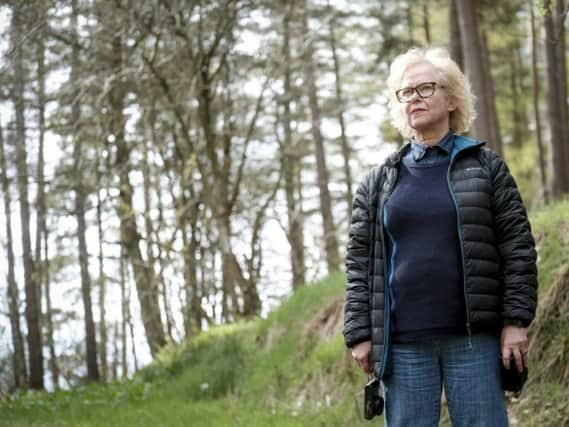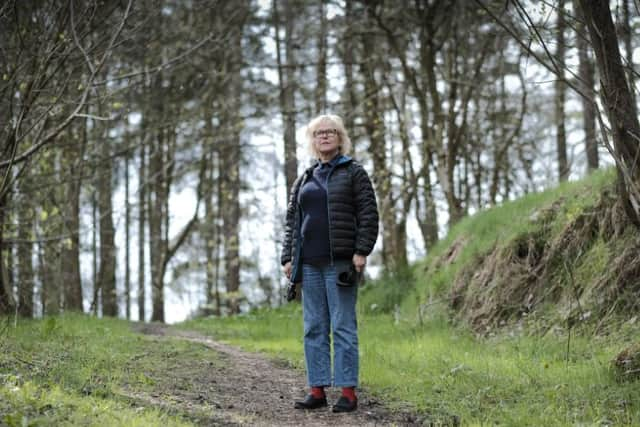The artist 'beguiled' by a Yorkshire forest


It was Lord Byron who once wrote: “There is pleasure in the pathless woods, there is rapture in the lonely shore, there is society where none intrudes, by the deep sea, and music in its roar; I love not Man the less, but Nature more.”
The natural world has inspired some of our greatest writers and artists down the centuries. It was the simple daffodil that inspired William Wordsworth’s most famous poem, while JMW Turner, arguably England’s greatest artist, was humbled by the sight of Gordale Scar, the dramatic limestone gorge a mile or so away from Malham, which he felt compelled to paint in 1816 during a visit to the North.
Advertisement
Hide AdAdvertisement
Hide AdThen there’s the work of Ted Hughes, another great titan of English literature, which bears the indelible mark of his childhood growing up in the countryside around Mytholmroyd and later Mexborough.


This affinity between writers and artists and nature continues today. Ashley Jackson has been painting his brooding moorland scenes of what he calls his “Yorkshire mistress” for the past 60 years, while David Hockney produced some of his most vivid and breathtaking work when he returned to Yorkshire and created his epic canvases of the Wolds that led to his record-breaking A Bigger Picture exhibition.
Helen Sear is the latest artist beguiled by the Yorkshire landscape, having spent time over the past 12 months exploring Dalby Forest, nestled on the southern slopes of the North York Moors National Park.
An exhibition is being held at the forest featuring some of her work including a new video and sound artwork, called Wahaha Biota, commissioned in partnership with Scarborough-based Crescent Art as part of Forest Art Works, a programme run by Arts Council England and Forest Commission England to promote art initiatives across the country.
Advertisement
Hide AdAdvertisement
Hide AdSear is the first artist-in-residence at Dalby Forest and her work, which has featured in national and international exhibitions, blurs the boundaries between photography and art, with close focus on human interaction with the natural world.
The 63 year-old artist first came to Dalby just over a year ago and since then has made regular visits from her home in Wales. She admits she was surprised by the sheer size of the forest, which contains more than 8,000 acres of woodland.
“You can quite easily be in the forest all day and not see anybody and there aren’t too many places where you can still do that.”
Sear visited at different times of year, enduring the biting cold of winter and the summer midges to see how the forest changed during the seasons.
Advertisement
Hide AdAdvertisement
Hide AdFrom the planting of trees to their processing in the saw mill, she videoed the day-to-day management of the forest environment which includes everything from wood production to leisure activities such cycling and even paintballing.
“The way I work is quite intuitive so I didn’t know what I was going to make and that was the point, it was about me responding to the place. I thought to begin with I would wander around and take some photographs, but when I came up to Dalby I very quickly realised it would be interesting to have access to all the different things going on here,” she says.
“I saw trees being planted and met people at the saw mill. I went out with the rangers and talked to the ecologist here, so I was put in touch with people who very generously allowed me to shadow them or work with them.”
This was the starting point for her photographs and audio recordings used in her final film. “I kept saying to people ‘it’s not a documentary, more a poetic interpretation.’ But the interesting thing is in a way it was like a documentary because nothing was staged and I what I’ve done in the edit is make it into something that looks almost like fantasy.”
Advertisement
Hide AdAdvertisement
Hide AdTaking lyrics from the many rock and pop concerts staged in Dalby Forest as a starting point, and producing sheets of words “cut up” in the tradition of the Dadaists of the 1920s, Sear led a sound workshop on site with Rob MacKay, Senior Lecturer in Music at the University of Hull. Participants vocalised the cut-up lyrics for a dawn chorus recording of human voices set in a forest clearing, and their calls and whispers mingle with birdsong and the sound of deer. The resulting sound collage is a lyrical cycle of sound and imagery that explores our relationship with the forest.
The material used in the film was all gathered on the hoof and what’s interesting is the sounds of the forest are just as important as the images. “I liked the idea of the forest almost kind of speaking,” says Sear. “I wasn’t interested in this notion of ‘wilderness’ because it doesn’t exist for a start and also because the film is populated with people and human activity.”
The staff who work at the forest found themselves getting involved and looking at the work they do slightly differently and Sear hopes the final short film, which runs for 27 minutes, offers not just an artist’s perspective but takes viewers on their own journey.
“It’s a very impressive and diverse landscape and I hope that’s reflected in the film. The whole point of it is it makes you feel something, I would say it’s the most ambitious thing I’ve ever made in terms of moving images,” she says.
Advertisement
Hide AdAdvertisement
Hide Ad“I’ve always been interested in ideas about landscape which is constructed in a way. The word ‘landscape’ came from the idea of painting and the construction of a particular view. And there’s this idea of being a spectator but I’m more interested in people being immersed in the artworks.”
The exhibition, which also involves Crescent Arts and Ryedale Folk Museum, also includes some of Sear’s pieces produced for the 2015 Venice Biennale, including a giant photograph of fallen trees that covers one wall of the exhibition space. “The whole picture is made up of about a hundred different pictures that are stitched together,” she says.
The pictures have been printed onto brushed aluminium and you can see where the trees have been cut by the chainsaw, which ties in with her desire to explore the impact we have had on nature. “I’m interested in people being moved by the artwork so they don’t just sit in one position, they have to walk around it to see how it changes when the light changes during the day.”
Like so many artists and poets before her, Sear wants people to look more closely at these natural landscapes rather than taking them for granted.
Advertisement
Hide AdAdvertisement
Hide Ad“The forest is often a backdrop to different activities. Some people come here to visit Go Ape or to go paintballing and that’s interesting because it’s seen in the mind as a place where you can let your primal instincts run riot, but it’s actually contained within this leisure industry and I’m playing with that and hopefully making people look at things they wouldn’t normally see.“It’s not just a backdrop, I want the forest to be play a central role and not just to be seen as a resource or a commodity, because it’s special in its own right.”
Helen Sear’s newly commissioned work, including the Wahaha Biota video, can be seen at Dalby Forest until June 10. www.forestry.gov.uk/dalbyforest